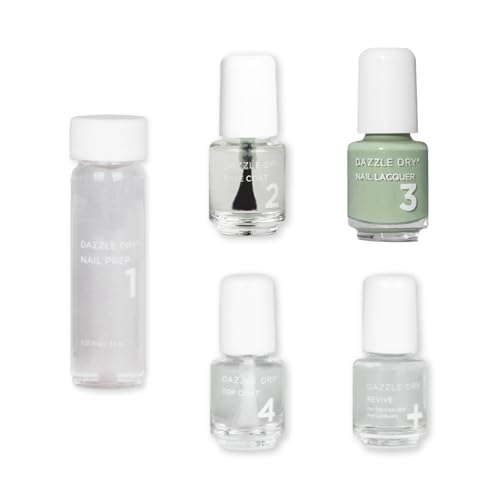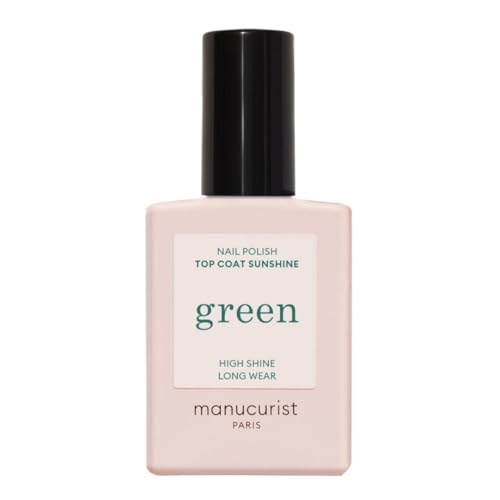So, Is Gel Polish Actually Bad for My Nails?
I demanded answers from the beauty experts.
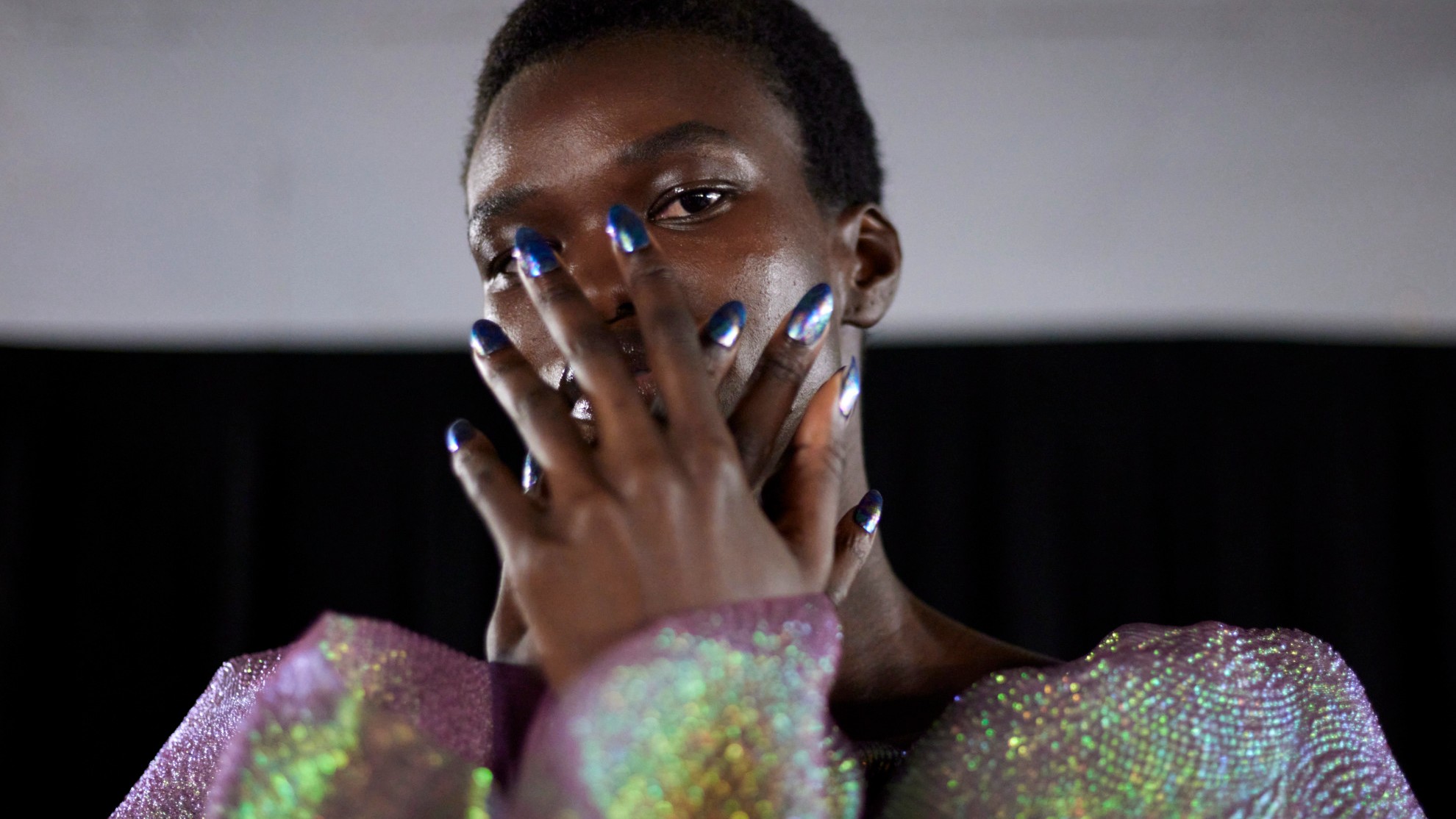
- Is the EU Ban a Cause for Alarm in the U.S.?
- Will Gel Manicures Ruin My Nails?
- How Long Will My Gel Manicure Last?
- Choosing a Gel Polish
- Do I Need to Take Breaks From Gel Manicures?
- Does UV Curing Cause Skin Damage?
- How Do I Safely Remove Gel Nails?
- Will a Gel Manicure Strengthen My Nails?
- How Long Is It Safe to Wear Gel Polish?
- Best Alternatives to Gel Manicures

Chloe Metzger
As someone who has been getting gel manicures every two weeks for the past 10 years, it's been an interesting month. In case you missed it: the European Union issued a ban on trimethylbenzoyl diphenylphosphine oxide (TPO) in gel nail polish due to concerns about reproductive toxicity, genetic mutations, and potential carcinogenic effects when ingested in high concentrations. All gel polishes containing the ingredient have been pulled from shelves—and as a result, concerns about gel polish's safety in the US has become a hot topic. Should I stick to press-ons or regular nail polish? Is Dazzle Dry the best alternative? Or, can I proceed full steam ahead with my gel manicures until the FDA tells me otherwise?
The truth—well, it depends who you ask. “The EU has banned gel nail polishes that contain TPO (trimethylbenzoyl diphenylphosphine oxide) after it was reclassified based on animal data suggesting potential risks,” explains Ashley Magovern, MD, board-certified dermatologist and Dermstore Medical Advisory Board member. “This is more of a precautionary regulatory step than a sign of any immediate danger. In fact, most experts believe the actual risk from gel manicures is very low, since TPO is largely ‘used up’ during the curing process.” She notes that, “It’s a positive that regulators are taking a closer look at these ingredients. If safer alternatives exist, it’s beneficial for the industry to be challenged to reformulate, ultimately providing consumers with more peace of mind and healthier options."
Even before the EU ban, the pros and cons of a gel manicure were highly debated. On the one hand, they offer a high-shine, long-lasting option that many credit for strengthening their nails and helping them grow. But there are plenty of critics, often citing that gel manicures are responsible for their flaky nail beds, yellow nails, weakened nails, and skin damage. "My personal opinion, and what I have observed in my practice, is that most of the damage from gel manicures is from the removal process, especially if the manufacturer's instructions are not followed, or two different brands are mixed and used," explains Dana Stern, MD, a dermatologist and nail specialist in New York City.
To determine what is hearsay and what is the truth, we spoke to Dr. Stern, Dr. Magovern, and nail artists Michelle Nguyen and Juanita Huber-Millet. Here, they explain the healthiest way to get your nails done, the best type of polish to use for strong nails, and how to perform safe gel nail polish removal.
Is the EU Ban a Cause for Alarm in the U.S.?
If you're currently wearing a gel manicure and are nervous about what the TPO ban means for you, don't panic. "The U.S. has not banned TPO, and the FDA hasn’t raised specific safety concerns with gel polish at this time," says Dr. Magovern. "That said, consumers who are cautious, especially those who are pregnant or have sensitive skin may want to seek out gels labeled 'TPO-free.' This is also a good reminder that application and removal techniques matter just as much as the formula in keeping nails healthy."
However, in her opinion, adopting a more natural or chemical-free approach to nail care is a plus. "I even find myself wishing natural nails would come back in style," she says. "I've been talking with my patients about this very thing. To me, smooth, strong, healthy nails should really be the next trend."
Will Gel Manicures Ruin My Nails?
Gel polish isn't necessarily going to ruin your nails, but it can weaken them if you don't follow proper aftercare instructions. "While gel polish offers a longer-lasting and chip-resistant finish, improper removal can potentially weaken or damage your nails. I always advise visiting a professional to ensure proper care and maintenance regardless of the type of polish you choose," says Stern. (If you have acrylics, read this guide on how to safely remove acrylics at home.)
Get exclusive access to fashion and beauty trends, hot-off-the-press celebrity news, and more.
Nguyen, CEO and founder of PLA, adds that gel polish itself is unlikely to affect natural nails. In fact, it can make them even stronger by protecting them from the environment.
A post shared by Queenie Nguyen | nail artist content creator (@nailartbyqueenie)
A photo posted by on
How Long Will My Gel Manicure Last?
The appeal of a gel manicure is that it lasts longer than a traditional polish. "A gel manicure typically lasts two to three weeks, sometimes extending to four weeks if applied and cared for properly," explains Magovern. "They stay glossy and chip-free far longer than traditional polish, but leaving them on too long can stress the natural nail, especially if they start to lift or peel."
Are Soft Gels or Hard Gels Better?
There are two different types of gel that you can get in salons: soft gels and hard gels (like a BIAB manicure). “Hard gels are the traditional gels of the '80s that are impermeable to acetone and need to be filed off, while soft gels are the newer ‘soak-off’ gels that can be removed without aggressive scraping,” says Dr. Stern. Unsurprisingly, hard gels are way more damaging than soft gels.
"When selecting a gel polish, I recommend researching the brand to ensure you're choosing a product that aligns with your nail health goals," says Huber-Millet. "Additionally, seeking out reputable salons that prioritize using high-quality, tested products can further ensure a healthier nail experience. Ultimately, it's about making informed choices that prioritize the health and well-being of your nails."
A post shared by PLA Nails (@pla_nails)
A photo posted by on
Do I Need to Take Breaks From Gel Manicures?
Dr. Magovern explains that for mild damage, such as thinning and brittleness, a period of two to four weeks should suffice. However, for more intense damage, it might take up to six to eight weeks. "Sometimes my patients need to take an even longer break, six months or more, if the nails are severely damaged, and that’s something we definitely see in practice," she says. During this time, she says it’s best to keep nails trimmed short, apply cuticle oil daily, and use a strengthening treatment to help them rebuild.
Does UV Curing Cause Skin Damage?
Gel manis require exposure to UV light (regardless of whether it’s a UVA lamp or an LED lamp), which can contribute to skin damage. Unfortunately, there isn't much research yet on UV rays related to gel manicures—and what is available reveals mixed findings.
A 2020 study in the Journal of Clinical and Aesthetic Dermatology found that there have been no cases reported of patients under 40 years old with a history of chronic gel manicures diagnosed with non-melanoma skin cancer or melanoma on the hands or nails. Meanwhile, there was little to no change in the incidence of melanoma among patients under 65.
More recently, a 2023 study in Nature Communications found that chronic use of dryers can damage your DNA and cause human cell mutations that could increase the risk of skin cancer. Even so, researchers agree that more data is needed to make any conclusions.
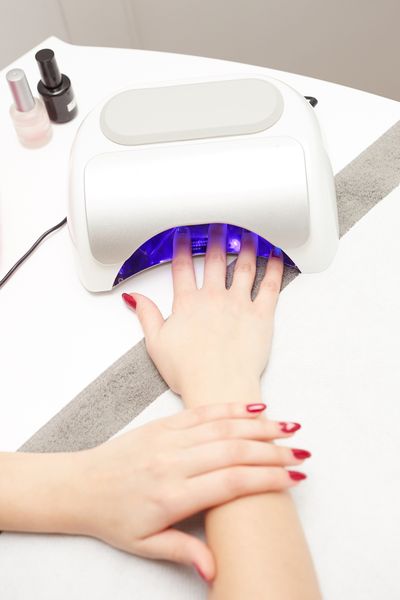
Gel polish often requires a UV lamp for curing. While one hand is in the machine, your tech can paint the other.
“Dermatologists tend to be cautiously optimistic people, but I still advise protecting your hands or feet with either a broad-spectrum sunscreen applied 15 minutes before exposure, or using either fingertip-less gloves or pedicure socks to protect the skin on the hands and feet from the aging effects of UV light,” Dr. Stern says.
How Do I Safely Remove Gel Nails?
Both Dr. Magovern and Dr. Stern agree that safe removal of gel polish is the key to preserving nail health. Never peel or pick at gel polish.
Magovern explains that it's best to start by gently filing off the top coat to break the seal, and then soak the nails in acetone with foil or clips for about 10 to 15 minutes before gently pushing off the softened gel. She says that if it resists, re-soak rather than force it. After removal, she notes to hydrate the nails and cuticles with oil and hand cream. "If you’re doing it at home, patience is essential. Rushing the process or over-filing can cause lasting nail damage," she says.
Will a Gel Manicure Strengthen My Nails?
If you're trying to ensure optimal nail health, your best option is seeing a professional for both application and removal. "To achieve stronger nails, maintain constant hydration by moisturizing regularly with cuticle oil and hand cream throughout the day," says Huber-Millet. "These practices have been game-changers for me in achieving healthier and stronger nails."
How Long Is It Safe to Wear Gel Polish?
You don't have to swear off gels for the rest of your life, but if you are worried about possible nail damage, you can try a few things to mitigate the effects. Remove your gels on time (two weeks is a good timeline) and take breaks between manicures to let your nails return to normalcy.
“Before the manicure, ask how the product will be removed and make sure that they won’t be using a gritty file, sander, or other tool to scrape the product off vigorously,” says Dr. Stern. “Gel polish should come off easily after soaking in acetone, and these other methods can cause tremendous, and sometimes irreversible, damage to the nail and cuticles.”
You need to be your own advocate in the salon, because nobody else cares as much about your nails as you do. “If something is wrong," says Dr. Stern, "you should speak up.”
Best Alternatives to Gel Manicures
There are many manicure options for those who aren't comfortable with gel manicures. Magovern explains that soft gels (often called BIAB or builder gels) are applied like a gel polish but add structure and strength, often lasting three to four weeks with less damage if removed properly. "They’re especially popular for people trying to grow out their natural nails," she says.
There is also dip powder, which doesn't require the use of a curing lamp and can last two to three weeks, and gel-effect polishes that mimic the look and shine of gel, but remove like regular polish.
On her list is shellac, a hybrid polish that’s easier to remove than standard gels. When all else fails, there is always regular polish to fall back on, which she says is the safest option. Although it's not as long-lasting a good, strong top coat can make a difference.
Keep scrolling for a few non-gel alternatives that can last just as long for your next manicure.
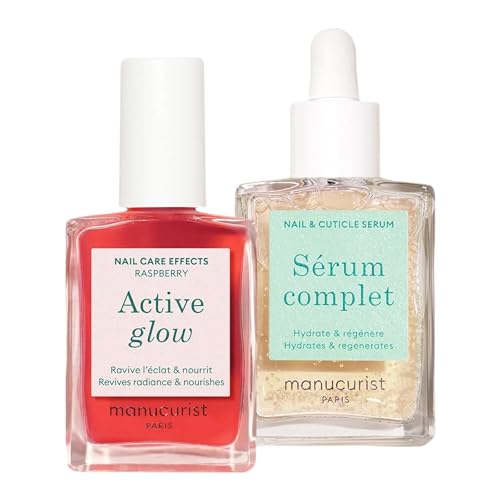
For an at-home, healthier spin on the fruit water nail trend—plus a nourishing cuticle oil—pick up this chic little set to add to your collection.
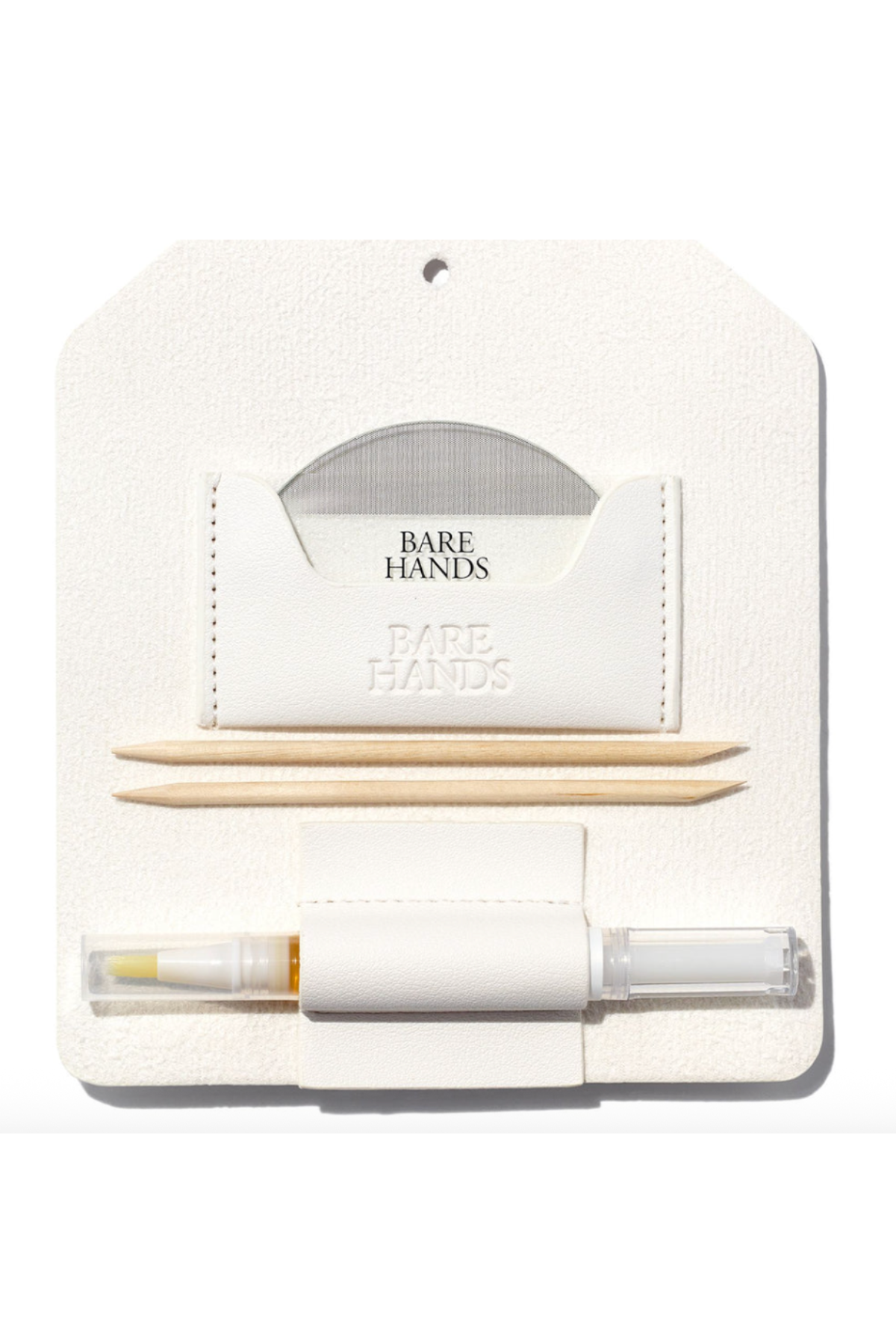
Strengthen, nourish, and add a ridiculous amount of shine all without polish. This glass nail file is Beauty Director Hannah Baxter's secret weapon for a glass-like manicure, no lacquer required.
Why Trust Marie Claire
For more than 30 years, Marie Claire has been an internationally recognized destination for news, fashion and beauty trends, investigative packages, and more. When it comes to the products Marie Claire recommends, we take your faith in us seriously. Every product that we feature comes personally recommended by a Marie Claire writer or editor, or by an expert we’ve spoken to firsthand.
Meet the Experts

Ashley Magovern, M.D., is a board-certified dermatologist and Dermstore Medical Advisory Board Member who owns her own practice, Manhattan Dermatology, in Manhattan Beach, California. She loves all aspects of dermatology, including both the medical and cosmetic components of the discipline. She has a passion for skin care, believes in the importance of a good home routine and loves educating people on how to come up with an individualized plan.

Dr. Dana Stern is well known for her unique expertise, as she is one of the only dermatologists in the country who specialize in the diagnosis, treatment, and surgery of the nail. She is a board certified dermatologist and an assistant clinical professor of Dermatology at the Mount Sinai Medical Center in New York City where she teaches dermatology residents nail surgery.
Dr. Stern’s expertise focuses on the treatment of nail infections, inflammatory disease of the nail, cosmetic issues related to nail disease, surgical nail procedures including biopsies, excisions of the nail unit and cancers of the nail.
Dr. Stern graduated Summa Cum Laude from Emory University where she majored in Biology Anthropology and received a medical degree from New York Medical College in 2002. She completed her medical residency in dermatology at the Mount Sinai Medical Center, where she served as Chief Resident.
Dr. Stern is a contributing editor for Nails Magazine, where she writes a column entitled; “A Day in the Life of a Nail Doctor.” She has been interviewed about nail care and nail cosmetics in Allure, Vogue, Natural Health, Woman’s World, Women’s Health, Nails Magazine, Oprah.com, Glamour.com, YouBeauty.com, WebMD and more.

Juanita Huber-Millet launched Townhouse with one goal: to elevate the nail salon experience. Townhouse has thrown away the rulebook and reinvented it for the modern age, using years of industry research to perfect every aspect from start to finish. Say hello to flawless treatments, beautiful salons, and impeccable service that you can rely on every time.

Coming to the scene as a self-taught lash artist in 2008, Michelle Nguyen knew how difficult it could be to truly break into the beauty industry. After running her salon for 6 years in Reno, Michelle ultimately decided to sell it to focus on Paris Lash Academy, or PLA — a way to share her vast lashing experience with lash artists all around the world. Today PLA employee over 50 employees at the PLA headquarters in Reno. She is proud to own multiple lash manufacturers in Vietnam, where she was born and raised on a coffee farm. These manufacturers allow Michelle to give back to her community, providing jobs for over 700 women who would otherwise be working in harsh farming environments.

Sophia Vilensky is a Freelance Beauty Writer at Marie Claire with a beauty, wellness, and entertainment journalism portfolio that includes contributions to Byrdie, Bravo, Teen Vogue, and Us Weekly. Growing up in a family of beauticians—and through her own personal studies—she developed an in-depth understanding of aesthetics, cosmetic product formulation, and beauty treatment development and has also held roles as a senior copywriter, content strategist, and proofreader for top beauty and wellness brands. Even so, you'd be hard pressed to find her with her hair and makeup actually done. Sophia is based in Minneapolis and is a 2019 graduate of the University of Minnesota, where she majored in English and minored in cinema studies. During her time at the university, she was the Arts Entertainment Editor for the Minnesota Daily, earning the 2019 Editor of the Year award for her work. She connected deeply with the Twin Cities arts scene, collaborating with leading beauty professionals, designers, and artists. Graduating Summa Cum Laude, her thesis—a close-reading of Vanderpump Rules—was featured on NPR. When not immersed in writing or testing new products, Sophia enjoys watching reality TV, reading, and exploring the newest woo-woo wellness trends. Keep up with her on Instagram @sophiavilensky.
- Chloe MetzgerBeauty Editor
